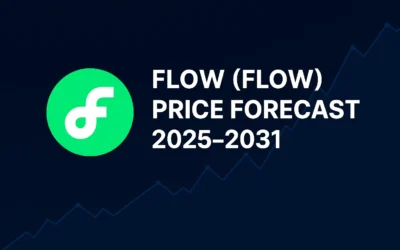Valuation Extremes as Predictors, Not Coincidence
When equity markets reach a trailing price-to-earnings (P/E) ratio of 30× earnings, history reveals a pattern: valuations stretch, risk premiums become thin, and corrections tend to follow. In October 2025, U.S. equities briefly pushed into this danger zone—the S&P 500 P/E ratio was estimated at ~30.34× by MacroMicro data. (MacroMicro) Meanwhile, the effective federal funds rate hovered at 4.33 % per FRED data. (FRED) This convergence of high valuation and tight monetary conditions demands the attention of serious investors and institutional allocators.
This article explores why the 30× threshold has historically preceded market adversity, what structural stresses magnify when P/E multiples expand too far, and how investors should recalibrate their risk posture at these inflection zones.
Historical Episodes: When P/E Hits 30, Then What?
The Roaring ‘20s and the Great Depression
By 1928, some equity indices traded at earnings multiples approaching 30×. That euphoria ended catastrophically in 1929, with massive drawdowns and a multi-year bear market. Valuation overshoot, margin debt, and leverage-driven panic played central roles.
The Dot-Com Bubble (1999–2000)
As the late 1990s tech boom matured, market multiples surged well past 30× in some sectors. Between March 2000 and October 2002, the Nasdaq lost nearly 78%, and broader indices fell sharply from elevated valuations. Expectations of perpetual growth collided with earnings shortfalls and credit stress.
Recent Precedent: 2021 and Beyond
In late 2021, flush liquidity and zero-interest regimes pushed forward and trailing P/E multiples into extended ranges. When central banks started tightening, the unwind was painful—many sectors with stretched valuations re-rated sharply. The echo of that adjustment remains a cautionary tale for 2025.
Why 30× Earnings Is More Than Symbolic
Earnings Yield Framings and Rate Comparisons
A P/E multiple of 30 implies an earnings yield of ~3.3% (1 ÷ 30). In an environment where Treasury yields on 10-year notes approach 4.3 %–4.5 %, and real rates are positive, equities at 30× offer weak compensation for risk.
A further complication: the spread between 10-year Treasury yields and the federal funds rate has narrowed considerably. As of July 2025, 10-year minus fed funds was ~0.04 %. (FRED) That compression suggests limited yield upside from bonds, but also less cushion for equities when rate policy changes.
Margin for Error Is Low
When valuations are stretched, small disappointments in revenue growth, margin compression, or regulatory shocks can lead to outsized downside. At 30× multiples, earnings must be near perfect just to hold levels. Any negative surprise tends to cascade through multiple re-ratings and forced deleveraging.
Behavior & Narrative Risk
At high multiples, the dominant narrative typically asserts that “this time is different”—whether due to technological revolutions, passive capital dominance, or paradigm shifts. These narratives can suppress skepticism until they unravel. The danger is that psychological complacency delays portfolio hedges and risk management.
Structural & Macro Risk Amplifiers in 2025
Rising Interest Rates & Tightening Liquidity
The Federal Reserve’s policy rate in 2025 (approx. 4.33%) (FRED) sits at levels rarely seen in recent cycles. Loose monetary conditions of prior years have given way to regime risk: one more rate hike or policy misstep can ripple across equity valuations.
Multiple analysts now project that a series of rate cuts could come in late 2025 should growth and inflation soften. (Reuters) This anticipation, however, often comes too late for valuation damage already incurred.
Earnings Pressure & Margin Squeeze
Many corporations achieved expansion in margins under benign conditions (low rates, global demand). But challenges such as supply chain costs, wage pressures, and regulatory constraints are already testing those margins. As profit growth slows, markets priced at 30× are exceptionally vulnerable.
Leverage, Derivatives, and Investor Positioning
In recent cycles, derivatives, options positioning, and margin-based strategies have amplified volatility. When extremes occur, forced liquidations or gamma hedging can cascade losses more quickly than traditional drawdowns. In a high-multiple environment, these mechanical effects intensify.
Indicators to Watch: When the Warning Lights Flash
| Indicator | Signal of Trouble | Historical Precedent |
|---|---|---|
| P/E multiple > 30× (trailing) | Market is in valuation danger zone | Late 1920s, late 1990s |
| Forward P/E disparity | Forward estimates diverging sharply from trailing | 2000 tech bubble |
| Yield curve inversion | Signals tightening macro regime | 2000, 2007, 2018 |
| Volume, credit spreads widening | Liquidity is contracting | Preceding corrections |
| Insider selling / institutional rotation | Smart money exiting aggressiveness | 1999–2000 rotations |
Investors should monitor divergence between fundamentals and narratives, shifts in credit conditions, and stress in smaller-cap / high-multiple sectors as early warnings.
How Institutional Investors React
Defensive Rebalancing
Institutions rarely sell indiscriminately at extremes. Rather, they trim exposure, raise cash, or hedge via derivatives. At 30× valuations, trimming winners and rotating into “safer” sectors (value, dividend, defensive) becomes prudent.
Hedging and Tail Protection
Using put options, collars, or tail hedges allows exposure to upside while limiting downside. These are essential when valuations entrust a market with limited margin for error.
Focus on Quality & Cash Flow
Investment mandates shift toward companies with stable cash flows, pricing power, low debt, and secular resilience. In high-multiple regimes, high-beta or speculative exposures become marginalized.
Scenarios & Market Outlook
Base Case: Soft Landing + Modest Re-rating
If central banks manage to ease inflation without tipping economies into recession, earnings may still grow, but multiples could compress from 30× to mid-20s. That would imply 10%–20% downside from current levels—even without full collapse.
Bear Case: Growth Shock, Policy Mistake
In a scenario of recession or tightening error, multiple contraction could intensify to mid-teens. In past cycles, valuations have retreated 30–50% from peak levels.
Bull Case (Less Likely): Multiple Expansion via Regime Shift
Only if inflation drops sharply, rates yield collapse, and structural capital flows re-enter equities could multiples re-extend further. But this requires nearly perfect macro execution and risk tolerance.
Takeaway: Don’t Ignore the Warning
When markets push P/E into the 30× zone, it is not coincidence—it’s a warning. For long-term investors and institutions alike, the wisdom isn’t to panic, but to act with discipline:
- Trim exposure and rotate toward higher-quality firms
- Use optionality and hedges to defend capital
- Watch macro, credit, and liquidity indicators
- Adjust return expectations downward
Valuations do not collapse overnight—but they can bend unexpectedly fast. Recognizing the warning from history doesn’t guarantee immunity—but it provides a strategic edge in turbulent markets.
If you want institutional-grade signals, positioning ideas, or early re-rating indicators tailored across sectors, visit BullishStockAlerts.com where we synthesize data, macro indicators, and valuation regimes in real time.
📖 Read them on our blog: Investment Blog
Did you find this article insightful? Subscribe to the Bullish Stock Alerts newsletter so you never miss an update and gain access to exclusive stock market insights: https://bullishstockalerts.com/#newsletter
Avez-vous trouvé cet article utile? Abonnez-vous à la newsletter de Bullish Stock Alerts pour recevoir toutes nos analyses exclusives sur les marchés boursiers : https://bullishstockalerts.com/#newsletter









0 Comments